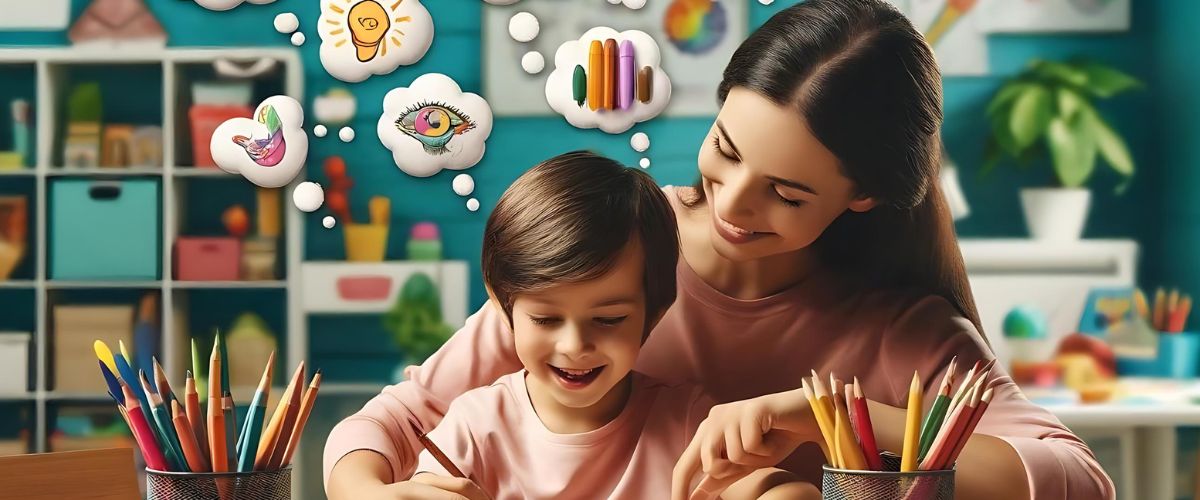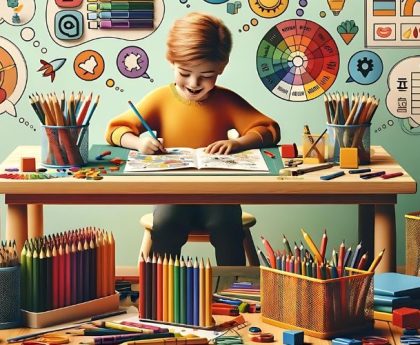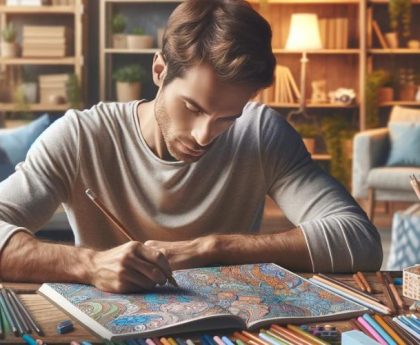Introduction
Coloring is more than just a fun activity for kids; it’s a crucial part of their development. Engaging in coloring helps children improve their motor skills, enhances their concentration, and boosts their creativity. This article will explore various coloring techniques suitable for children of different ages and skill levels. From basic methods to advanced tips, we’ll provide a comprehensive guide to help young artists improve their coloring skills.
Understanding Basic Coloring Techniques
Choosing the Right Tools
Selecting the right tools is essential for a good coloring experience. Younger children may benefit from using larger, easy-to-hold crayons and markers, while older children might enjoy the precision offered by colored pencils. It’s also helpful if you keep your coloring materials and art supplies tidy and organized.
- Crayons: Best for toddlers and preschoolers due to their thick size and ease of use.
- Markers: Ideal for bold and vibrant colors. Choose washable markers for easy cleanup.
- Colored Pencils: Great for older children who can handle more delicate tools and desire more precision.
Basic Coloring Techniques
Staying Within the Lines
One of the first skills children learn in coloring is staying within the lines. This helps develop their fine motor skills and hand-eye coordination.
Tips to Improve Control:
- Encourage slow and deliberate movements.
- Use larger images with wide borders for beginners.
- Praise efforts to build confidence.
Using Light and Dark
Understanding how pressure affects color is a foundational technique.
Practicing Pressure Control:
- Light Strokes: Show your child how to lightly color an area to create a soft, pastel-like effect.
- Dark Strokes: Demonstrate applying more pressure to produce a bold, vibrant color.
Exercises:
- Create a gradient chart from light to dark.
- Practice filling shapes with varying pressure.
Beginner Drawing Techniques
Simple Shapes and Patterns
Starting with simple shapes helps children grasp the basics of drawing and coloring.
Teaching Basic Shapes:
- Use everyday objects to illustrate shapes (e.g., a ball for a circle, a book for a rectangle).
- Encourage drawing these shapes repeatedly.
Pattern Exercises:
- Create patterns using basic shapes (e.g., circles, squares).
- Color each shape or pattern differently to practice consistency.
Color Filling
Learning to fill shapes evenly is a fundamental skill.
Techniques for Even Color Filling:
- Show how to move the hand steadily in one direction.
- Use circular motions to fill larger areas smoothly.
Practice Exercises:
- Print or draw large shapes for coloring practice.
- Use different colors to fill sections of a shape.
Shading Techniques for Children
Introduction to Shading
Shading adds depth and dimension to drawings. It’s a more advanced technique but can be simplified for beginners.
Understanding Shading:
- Explain shading as a way to show light and shadow.
- Use simple examples, like shading one side of a ball to show where the light is coming from.
Basic Shading Methods
Hatching
Using parallel lines to create shading is a simple yet effective technique.
How to Hatch:
- Draw a series of parallel lines close together to create a shaded effect.
- The closer the lines, the darker the shade.
Cross-Hatching
Cross-hatching involves intersecting lines to add depth.
How to Cross-Hatch:
- Draw one set of parallel lines.
- Add another set of lines intersecting the first set at an angle.
Stippling
Creating shades with dots can be fun and less intimidating for young artists.
How to Stipple:
- Use small dots to fill an area, concentrating dots closer together for darker areas and spreading them out for lighter areas.
Practicing Shading
Exercises:
- Shade simple shapes like spheres or cubes.
- Create a shading worksheet with different techniques to practice.
Blending Colors
Understanding Color Blending
Blending colors can create beautiful effects and add realism to drawings.
Why Blend Colors?:
- Blending can show transitions, like a sunset or a gradient.
- It makes artwork look more polished and professional.
Basic Blending Techniques
Using Two Colors
Start with simple blending exercises.
How to Blend Two Colors:
- Choose two colors and show how to lightly overlap them.
- Practice creating a smooth transition from one color to the other.
Gradient Blending
Creating smooth gradients is a bit more advanced but achievable with practice.
How to Create a Gradient:
- Start with a light color and gradually add more pressure or another color to create a seamless transition.
- Use circular motions to blend the colors smoothly.
Tools for Blending
Using Colored Pencils and Crayons:
- Soft colored pencils blend more easily than hard ones.
- Wax-based crayons can be blended using a bit of pressure and circular strokes.
Blending Stumps:
- These tools help smooth out pencil lines and create seamless blends.
Advanced Coloring Tips for Kids
Adding Texture
Textures can make drawings more interesting and realistic.
Creating Textures:
- Use short, quick strokes to create the appearance of fur or grass.
- Practice creating different textures by observing real objects.
Using Light and Shadow
Adding light and shadow can make drawings pop and appear more three-dimensional.
Techniques for Light and Shadow:
- Identify a light source and shade accordingly.
- Use a darker shade of the same color for shadows and a lighter one for highlights.
Layering Colors
Layering adds richness and depth to colors.
How to Layer Colors:
- Start with a base color and lightly add layers of different colors on top.
- Practice layering with different pressure to see how it changes the color intensity.
Advanced Shading Techniques
Refining shading skills can elevate a child’s artwork.
Complex Shadows and Highlights:
- Study how shadows and highlights fall on complex shapes.
- Practice by drawing objects from real life and adding appropriate shadows and highlights.
Encouraging Creativity and Exploration
Experimenting with Colors
Encourage children to explore and experiment with colors.
Unconventional Color Combinations:
- Let kids choose colors freely to create unique artwork.
- Suggest fun projects like coloring a tree with rainbow leaves.
Combining Techniques
Combining different techniques can produce impressive results.
Projects to Combine Techniques:
- Create a landscape that uses shading, blending, and texture techniques.
- Encourage kids to develop their own style by mixing different methods.
Conclusion
Coloring is a wonderful way for children to express their creativity and develop their artistic skills. By practicing these techniques, from basic coloring to advanced shading and blending, young artists can create beautiful and impressive artwork. Encourage your child to keep experimenting, practicing, and most importantly, enjoying the process of coloring.
Additional Resources
Online Resources
- Websites offering free printable coloring pages and tutorials
- YouTube channels with coloring technique videos for kids
Interactive Coloring Apps
- Apps that allow kids to color digitally, providing a modern twist on traditional coloring
By following these guides and tips, children can enhance their coloring skills and discover new ways to express their creativity through art.





